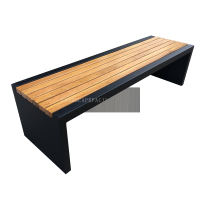Welcome to the website for landscape facilities products and knowledge.
How does the table’s design impact its ability to be used in conjunction with outdoor retail or dining areas?
The integration of tables into outdoor retail and dining areas requires thoughtful design considerations that extend far beyond aesthetics. A table's structural design directly influences its functionality, durability, and overall contribution to the outdoor experience. Commercial outdoor tables must withstand constant exposure to weather elements while maintaining their visual appeal and structural integrity.
Material selection stands as the foundational element determining a table's suitability for outdoor commercial use. Weather-resistant materials like powder-coated aluminum, marine-grade polymer, or specially treated hardwoods provide longevity against moisture, UV radiation, and temperature fluctuations. These materials prevent warping, fading, and corrosion that would otherwise compromise both safety and appearance in high-traffic commercial environments.
The table's dimensional design significantly impacts space utilization and traffic flow. For dining areas, appropriately sized tables with adequate leg room facilitate comfortable seating while allowing efficient server movement. In retail settings, modular tables with adjustable heights or collapsible features offer flexibility for seasonal displays or space reconfiguration. The table height itself dictates its primary function – standard dining height encourages leisurely meals while bar-height tables promote quicker turnover.
Functional design elements like integrated umbrellas, built-in cooling compartments, or cable management systems enhance the table's utility in commercial settings. Tables with center holes for market umbrellas provide essential shade, while built-in planters or dividers can subtly define spaces without creating physical barriers. For restaurants, tables with weighted bases prevent tipping during windy conditions, ensuring guest safety and reducing liability concerns.
Maintenance requirements form another critical design consideration. Commercial outdoor tables should feature seamless surfaces, easy-to-clean materials, and minimal crevices where debris can accumulate. Tables with removable tops or component parts simplify deep cleaning and repairs, reducing downtime in busy commercial operations. The finish should resist stains from food, drinks, and cleaning chemicals commonly used in hospitality environments.
The visual design contributes to branding and atmosphere creation. Tables with customizable colors, embedded logos, or coordinated accessories help establish a cohesive outdoor aesthetic. The style – whether modern minimalist, rustic farmhouse, or tropical resort – should align with the establishment's overall theme while complementing other outdoor elements like lighting, flooring, and landscaping.
Ultimately, successful outdoor table design balances form and function to create spaces that are both practical and inviting. The right table enhances customer comfort, supports operational efficiency, and withstands the rigors of commercial use while contributing to the establishment's unique outdoor ambiance.
Related search:

Recommendation
Modern Stainless Steel Begonia Wood Park Chair Outdoor Courtyard Leisure Sun Protection Bench Long Seat